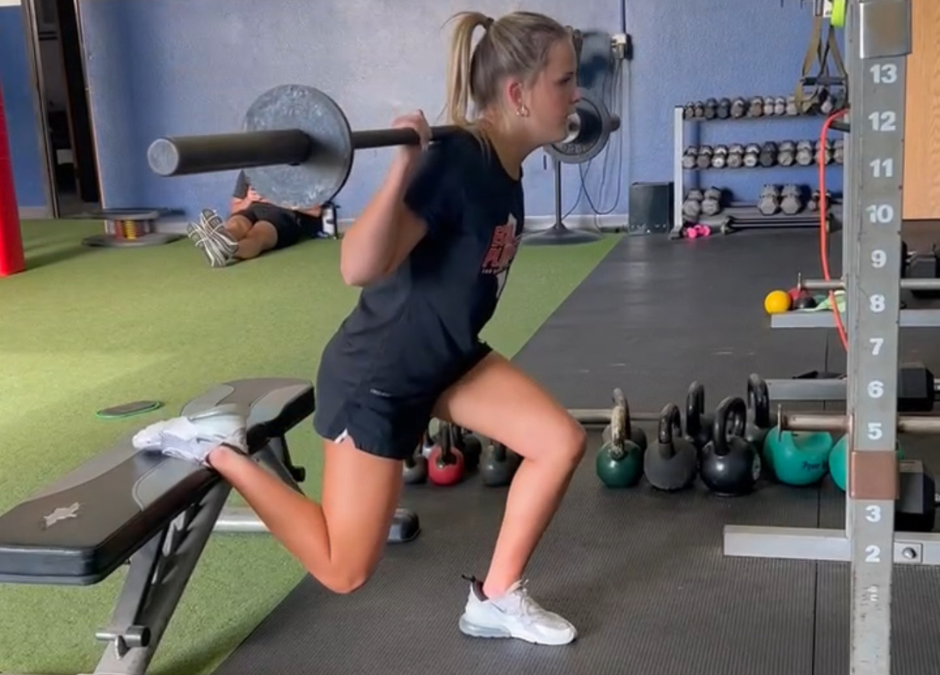Soccer is a fast-paced, dynamic sport requiring players to be agile, explosive, and durable. While skill, technique, and tactical knowledge are all essential to succeed on the field, strength training plays a crucial role in taking a player’s performance to the next level.
Why Do Soccer Players Need Strength Training?
Many players mistakenly think that strength training will bulk them up and hinder their speed and agility. However, the truth is that soccer-specific strength training is designed to improve a player’s performance without sacrificing flexibility or coordination.
Strength training for soccer is about functional strength – strength that helps players perform on the field. By focusing on compound movements that replicate the dynamic movements in soccer, strength training ensures players build the necessary muscle groups to excel in every aspect of the game.
Additionally, strength training is an investment in a player’s longevity. Strong muscles, tendons, and ligaments help players maintain peak performance over the years, minimizing the risk of injuries and ensuring that they can compete at the highest level.
What Can Strength Training Do for Soccer Players?
- Improved Power and Explosiveness: Soccer requires quick, explosive movements: sprinting, jumping, and rapid direction changes. Strength training helps build the muscle power needed to make those high-intensity efforts. Whether it’s making a strong tackle, powering through a challenge, or accelerating past an opponent, strength is the foundation of these movements.
- Increased Endurance and Stamina: While soccer is an aerobic sport, strength training builds endurance at the muscular level. By focusing on functional strength, players can improve their stamina throughout a match, reducing fatigue and maintaining a high level of performance even during the latter stages of the game.
- Injury Prevention: Soccer players can be prone to injuries, particularly muscle strains, ligament tears, and joint issues. Strengthening muscles around key areas like the core, hips, knees, and ankles can significantly reduce the risk of injury. Additionally, strengthening muscles helps with joint stability, enhancing overall mobility and resilience against sudden, forceful impacts.
- Improved Speed and Agility: Strength training increases muscle activation, allowing for faster, more fluid movements. Agility drills paired with strength exercises can help soccer players move more efficiently, react quicker, and change direction without losing balance or control.
- Better Balance and Stability: Soccer players need to have great body control and balance, especially during tackles, aerial duels, or when dribbling past opponents. Strengthening the lower body and core muscles can help players maintain a solid center of gravity and perform better during high-pressure situations.
Essential Strength Training Exercises for Soccer Players
To maximize performance, soccer players should include a variety of strength training exercises that target key areas of the body. Here’s a breakdown of exercises that should be included in a well-rounded program:
- Lower Body Strength: Squats, lunges, and Romanian deadlifts (RDLs) are fundamental for building leg strength, which is essential for sprinting, jumping, and kicking. These exercises help players develop the power and stability they need to excel in the game.
- Upper Body Strength: Although soccer is lower-body focused, upper-body strength is still important. Exercises like chest presses and pull-ups improve a player’s ability to battle opponents, shield the ball, and even execute throw-ins with more power and control.
- Core Strength: A strong core is crucial for maintaining balance and stability during dribbling, shooting, and tackling. Core exercises like planks, dead bugs, and Pallof presses help improve body control and enhance overall movement efficiency.
- Plyometrics: Plyometric exercises like box jumps are vital for improving explosive power and agility. These exercises help players jump higher, sprint faster, and react quicker, all of which are key during aerial duels, tackles, and speed bursts on the field.
- Mobility and Stretching: Flexibility and range of motion are essential for reducing injury risk and improving fluid movement during a game. Mobility exercises and dynamic stretching should be incorporated to ensure players stay agile and move efficiently on the field.
Conclusion
Strength training is not just about building muscle mass; it’s about developing power, endurance, stability, and injury resistance that are crucial for high-performance soccer. A well-rounded strength training program can significantly enhance a soccer player’s overall ability, making them faster, stronger, and more durable on the field. When incorporated effectively into training, it will help players improve their game and extend their careers while reducing the risk of injury.

